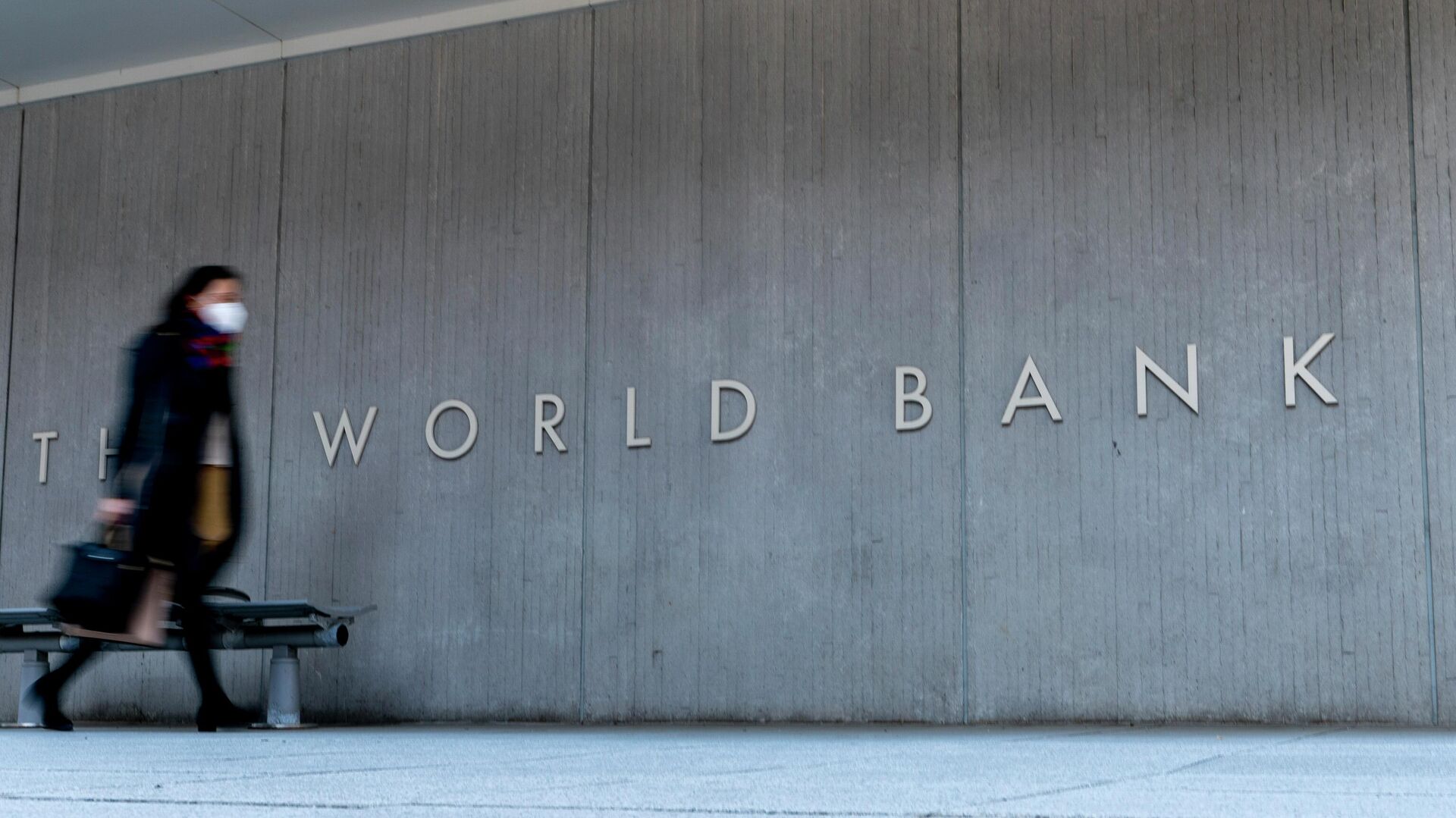https://en.sputniknews.africa/20241015/world-bank-downgrades-sub-saharan-africa-economic-growth-forecast-for-2024-to-3-1068690381.html
World Bank Downgrades Sub-Saharan Africa Economic Growth Forecast for 2024 to 3%
World Bank Downgrades Sub-Saharan Africa Economic Growth Forecast for 2024 to 3%
Sputnik Africa
South Africa, the strongest economy of the continent, is expected to grow 1.1% this year and 1.6% by 2025, up from 0.7% last year. Nigeria is expected to grow... 15.10.2024, Sputnik Africa
2024-10-15T13:37+0200
2024-10-15T13:37+0200
2024-10-15T14:30+0200
sub-saharan africa
world bank
sub-saharan africa
economic growth
economy
development
sudan
conflict
sudan armed forces
debt
https://cdn1.img.sputniknews.africa/img/07e7/08/0a/1061215917_0:161:3071:1888_1920x0_80_0_0_66f603137bb56f694b4f66e324c4fe8d.jpg
Sub-Saharan Africa's growth forecast for 2024 has been lowered to 3%, down from 3.4% due to the destruction of Sudan's economy by civil war, the World Bank said in its Africa's Pulse report published on Monday.However, growth is still expected to be well above last year's 2.4%, driven by higher private consumption and investment, and further accelerate to 4% in 2025–26, the document added.Sub-Saharan African countries are working to improve their fiscal balances by reducing spending and increasing revenue. While some progress has been made, mounting interest payments are hindering fiscal consolidation efforts, according to the report.The median fiscal deficit is expected to decline, but high debt service levels, driven by increased interest payments and a surge in public debt over the past decade, are posing challenges. This high debt burden is limiting fiscal space for development investments and increasing vulnerability to economic shocks. The risk of external debt distress remains high, with over half of International Development Association-eligible countries facing a high risk or already in distress.Total external debt among African economies has risen to about $500 billion from $150 billion a decade and a half ago, with the majority owed to bond market investors and China, the economist added.Regarding inflation in Sub-Saharan Africa, the report showed that it is projected to decline in 2024 and 2025 due to factors like stabilizing commodity prices, easing supply chain disruptions, and tightened monetary and fiscal policies. While most countries are experiencing a slowdown in inflation, around 30% of countries still have high inflation rates. This trend is leading to a gradual decrease in interest rates across the region, with countries that have already achieved low inflation possibly moving toward policy rate cuts. However, countries with higher inflation might need to maintain or even increase interest rates, the document added.
sub-saharan africa
sudan
south africa
kenya
nigeria
southern africa
east africa
west africa
Sputnik Africa
feedback@sputniknews.com
+74956456601
MIA „Rossiya Segodnya“
2024
News
en_EN
Sputnik Africa
feedback@sputniknews.com
+74956456601
MIA „Rossiya Segodnya“
Sputnik Africa
feedback@sputniknews.com
+74956456601
MIA „Rossiya Segodnya“
world bank, sub-saharan africa, economic growth, economy, development, sudan, conflict, sudan armed forces, debt, debt restructuring, inflation, south africa, kenya, nigeria, southern africa, east africa, west africa
world bank, sub-saharan africa, economic growth, economy, development, sudan, conflict, sudan armed forces, debt, debt restructuring, inflation, south africa, kenya, nigeria, southern africa, east africa, west africa
World Bank Downgrades Sub-Saharan Africa Economic Growth Forecast for 2024 to 3%
13:37 15.10.2024 (Updated: 14:30 15.10.2024) Alla Shukanova
Writer / Editor
South Africa, the strongest economy of the continent, is expected to grow 1.1% this year and 1.6% by 2025, up from 0.7% last year. Nigeria is expected to grow by 3.3% this year, rising to 3.6% in 2025, while Kenya, East Africa's leading economy, is likely to expand by 5% this year, the report said.
Sub-Saharan Africa's growth forecast for 2024 has been lowered to 3%, down from 3.4% due to the destruction of Sudan's economy by civil war, the World Bank
said in its Africa's Pulse report published on Monday.
"The downgrade is partly explained by the collapse of economic activity in Sudan caused by the armed conflict, which has destroyed physical and human capital as well as state capacity, with adverse impacts on food security and greater forced displacement. Excluding Sudan, the region is expected to grow at 3.5 percent in 2024," the report read.
However, growth is still expected to be well above last year's 2.4%, driven by higher private consumption and investment, and further accelerate to 4% in 2025–26, the document added.
"The region needs much, much larger levels of investments in order to be able to recover faster... and be able to reduce poverty," chief economist for the Africa region at the World Bank Andrew Dabalen told a media briefing.
Sub-Saharan African countries are working to improve their fiscal balances by reducing spending and increasing revenue. While some progress has been made, mounting interest payments are hindering fiscal consolidation efforts, according to the report.
"There are staggering levels of interest payments," Dabalen emphasized.
The median fiscal deficit is expected to decline, but high debt service levels, driven by increased interest payments and a surge in public debt over the past decade, are posing challenges.
This high
debt burden is limiting fiscal space for development investments and increasing vulnerability to economic shocks. The risk of external debt distress remains high, with over half of International Development Association-eligible countries facing a high risk or already in distress.
"As long as these debt issues are not resolved, there is going to be a lot of 'wait and see' games going on, and that is not good for the countries and certainly not good for the creditors as well," he said.
Total external debt among African economies has risen to about $500 billion from $150 billion a decade and a half ago, with the majority owed to bond market investors and China, the economist added.
Regarding inflation in Sub-Saharan Africa, the report showed that
it is projected to decline in 2024 and 2025 due to factors like stabilizing commodity prices, easing supply chain disruptions, and tightened monetary and fiscal policies. While most countries are experiencing a slowdown in inflation, around 30% of countries still have high inflation rates.
This trend is leading to a gradual decrease in interest rates across the region, with countries that have already achieved low inflation possibly moving toward policy rate cuts. However, countries with higher inflation might need to maintain or even increase interest rates, the document added.

